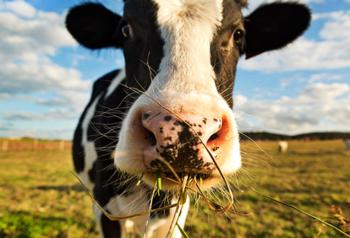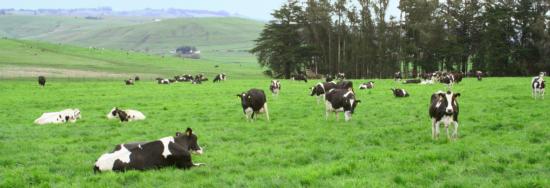In Marin, the Grass Really is Greener on the Other Side
By Paulette Swallow, Sustainable Ag Coordinator
Rick LaFranchi, owner of Nicasio Valley Cheese likes to say, “We have some of the best grass in the world here in Marin, giving us a competitive advantage in producing organic milk, and more.” This sentiment was also reflected during Ralph Grossi’s reflections on Marin agriculture at the recent event, Honoring Agriculture Diversification in Marin. In fact, truer words could not have been spoken that day. Marin County’s grazing landscape lends a huge advantage to our dairy farmers, both historically and in the present-day.
While thriving in Marin County, small-scale and organic isn’t the most common model seen in the California dairy industry. California, the #1 dairy producing state in the Nation, is comprised mostly of conventional dairies. Marin is unique - whether conventional or organic - the dairies here produce the same high quality milk as they always have.

It also made financial sense because the organic milk market is more stable and more profitable than the conventional milk market. The stability and higher value of the organic milk market has helped keep local dairies in business that would have otherwise not been able to survive the volatile conventional milk prices. These farmers have always been committed to their land, animals, and way of life. Becoming Certified Organic was a matter of embracing business practices needed to obtain official certification papers for their dairies.
In addition to the transition to organic, another kind of farm diversification has been a key element in the transition of the Marin dairy industry - keeping milk on the farm instead of shipping it out to a local creamery - and producing a farmstead product right on the farm. In the late 18th and early 19th centuries, most dairy operations were small, ranging from ten to 15 cows, or as many as farmers could milk twice a day, by hand. Before refrigeration, all of the milk produced was churned into butter. As proof, in 1862 Marin provided a quarter of California’s butter. Fresh milk was poured into pans and cooled. The cream was skimmed from the top, churned into butter and salted to preserve it. Some families made their own cheese or used the skills of a cheese maker who traveled from ranch to ranch. Since land travel was limited to horse trails and wagon roads, creeks and waterways were the major links to the San Francisco market (Amazing But True Facts About Marin County Agriculture 2015).

Today several farmstead creamery models can be found in Marin County. With an average milking herd of 300 cows, many produce some of the finest varietals of cheese that can be found in the San Francisco market place as well as distributed throughout the United States. For the dairy industry in Marin the quality of the milk and its end products isn’t about whether it is organic or conventional milk, but rather the pasture-based systems that Marin farmers have been able to utilize. According to Tim Kehoe who runs a dairy in Inverness, the organic transition made sense for him. It was just a matter of figuring out how to implement small changes to the herd and being prepared to take on the plethora of paperwork. “Our daily practices stayed pretty much the same. Our cows have always had access to pasture, and it has always been an important part of their daily intake. The difference in what we are doing with organic versus years of conventional dairying isn’t much. Organic offers a higher premium, so we don’t need to worry as much about our cow’s production; on average the cows are milking less which is okay.”
While agricultural diversification is nothing new for farmers and ranchers in Marin, the strong trend toward organic has helped keep the Marin dairy industry not only viable but also unique within the industry.



